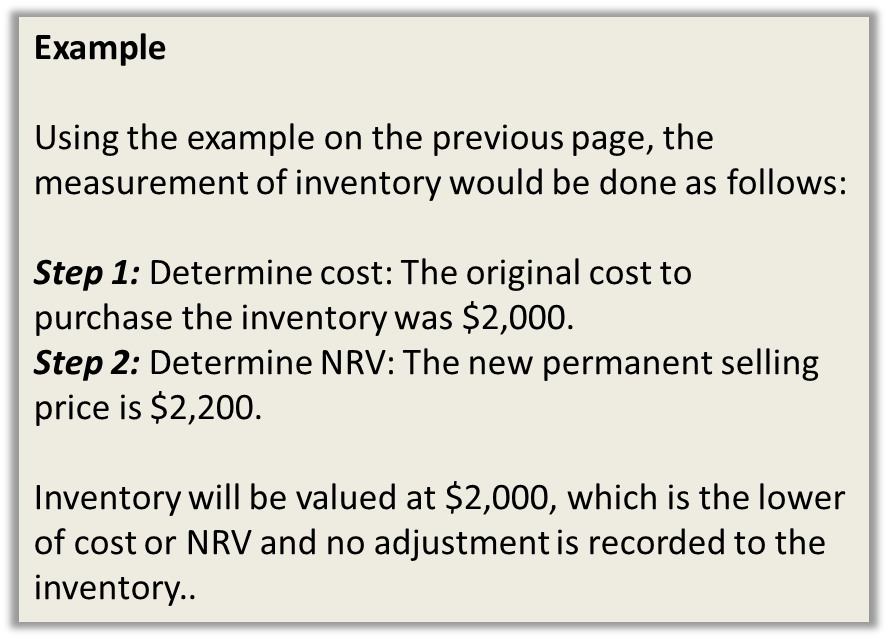
A ratio below 1 indicates a company may have a difficult time paying principle and interest charges in the future as it may not generate enough operating income to cover these charges as they become due. The first step to calculating the debt service coverage ratio is to find a company’s net operating income. Net operating income is equal to revenues less operating expenses and is found on the company’s most recent income statement. Companies of all sizes use debt service coverage ratio to guide their financial planning. For example, a small business may use DSCR to determine whether it can afford to take on new debt, while a larger corporation may use it to evaluate the financial health of potential acquisition targets. By analyzing DSCR alongside other financial metrics, companies can make more informed decisions and achieve long-term financial stability and success.
The ratio is calculated by dividing net operating income by debt service, including principal and interest. A debt service coverage ratio of 1 means a property is generating enough income to make its loan payments, while DSCR of less than 1 means it is not. Therefore, commercial lenders always want a project to have a DSCR higher than 1 to reduce the likelihood of a default or foreclosure.
Common Mistakes to Avoid When Calculating Debt Service Coverage Ratio
The investor can now look for rental homes for sale across the country that meet the investor’s down payment allocation and the lender’s DSCR requirements. These costs are not included when calculating operating expenses because they may vary from one investor to another. For example, one buyer may make a conservative down payment of 25% when financing a rental property, while another may use a high LTV by making a smaller down payment.
Fitch Rates Atlanta, GA Airport’s Series 2023B-2 Sr. Revs ‘AA … – Fitch Ratings
Fitch Rates Atlanta, GA Airport’s Series 2023B-2 Sr. Revs ‘AA ….
Posted: Thu, 17 Aug 2023 18:40:00 GMT [source]
DSCR loans — also known as investor cash flow loans — are frequently used by real estate investors to qualify for mortgages and buy investment properties. When a lender is evaluating a borrower for a multifamily or commercial real estate loan, DSCR is one of the most important factors that they will take into account. This is because it’s one of the best predictors of whether a borrower will be able to pay back a loan on time. In most cases, lenders prefer properties with DSCRs of 1.20x or more, though the required DSCR will typically depend on the financial strength of the borrower, the type of property in question, and other factors. For instance, while multifamily apartment properties may need a minimum DSCR of 1.20x to qualify for funding, riskier property types, such as hotels or self-storage facilities, may need a DSCR of 1.40x- 1.50x in order to qualify. Debt Service Coverage Ratio, or DSCR, is one of the key metrics that lenders use when determining a borrower’s eligibility for a CMBS loan.
Understanding the Importance of Debt Service Coverage Ratio
The Term Sheet will define the DSCR and this is one of the core drivers of the debt sizing for the project and assesses the ability of the project to repay its debt. The debt repayments need to match the cashflow profile to avoid having periods where there is not enough actual cashflow to repay the debt. We’ll shop your deal to thousands of lenders to ensure you have the best opportunity to find the most advantageous financing for your situation. Along with loan-to-value and loan-to-cost ratios, DSCR is an essential part of the decision-making process when a commercial or multifamily lender decides whether to issue a loan. An evaluation of a company’s DSCR gives the lender a good idea on whether the business can pay a loan back, on time, and with interest. The higher the DSCR number is, the more likely the business will be granted the loan.
By understanding this concept, companies and lenders can make more effective decisions while minimizing financial risk. Like DSCR loans, this ratio is often used in real estate to determine whether an investment property’s cash flow can cover its mortgage payments. DSCR (Debt-Service Coverage Ratio) is defined as the cash flow necessary to pay debts – interest, principal, lease payments, etc. DSCR requirements are different for different types of HUD multifamily loans, however, HUD 223(a)(7) loans are subject to a maximum DSCR of 1.11x (for-profit entities) or 1.05x (nonprofit entities). There are a variety of metrics that real estate investors use to monitor the financial performance of a rental property. One of the most overlooked and misunderstood is the debt service coverage ratio in real estate.
Lenders, stakeholders, and partners target DSCR metrics, and DSCR terms and minimums are often included in loan agreements. For more accuracy, reduce the total debt service figure by the beneficial effect of the deductibility of interest payments on income taxes. Additionally, DSCR can also help lenders determine the appropriate loan amount to offer a borrower. If a borrower has a high DSCR, indicating that they have a strong ability to cover debt payments, a lender may be more willing to offer a larger loan amount.

Having a high Debt Service Coverage Ratio (DSCR) is beneficial for borrowers because it indicates that they have sufficient income to cover their debt obligations. A DSCR of 1.25 or higher is often considered “strong” by lenders, and it can help borrowers qualify for more favorable loan terms. A high DSCR also indicates that the borrower is less likely to default on their loan, as they have sufficient income to cover their debt obligations. Additionally, a high DSCR can help borrowers secure lower interest rates and longer loan terms. In some cases, lenders will look beyond the specific DSCR of the property, and instead, will look at something called global DSCR. Global DSCR looks at the property owner’s personal income and expenses (or the income and expenses from their related business entities).
DSCR is calculated by dividing the total operating profit of the company by the total debt obligation. Lenders usually calculate this on a monthly basis on the forecast, depending on the frequency of the debt payments. If debt payments are to be made on a monthly basis, DSCR will be calculated on a monthly basis. Most lenders define operating profits as Earnings Before Interest Taxes Depreciation and Amortization (EBITDA).
How Much House Can I Afford? How To Calculate Your Home Affordability And Assess Your Finances
For instance, a business applying for a line of credit might be obligated to ensure that their DSCR does not dip below 1.25. In addition to helping banks manage their risks, DSCRs can also help analysts and investors when analyzing a company’s financial strength. Though debt and loans are rooted in obligatory cash payments, DSCR is partially calculated on accrual-based accounting guidance. Therefore, there is a little bit of inconsistency when reviewing both a set of GAAP-based financial statements and a loan agreement that stipulates fixed cash payments. The DSCR calculation may be adjusted to be based on net operating income, EBIT, or EBITDA (depending on the lender’s requirement).

DSCR is valued because it’s one of the best predictors of a borrower’s ability to pay back a loan on time. If your total annual income is $80,000, your debt-service coverage ratio would be just under 40%. Most lenders would be comfortable approving you for this mortgage because your total debt would be less than 43% of your gross income. And your total housing debt – $23,184 a year – would be just over 30% of your annual income. The debt service coverage ratio of a rental property can and will change after an investor has purchased the home. For example, assume an investor has set aside $25,000 in capital to be used as a down payment, and the lender requires a debt service coverage ratio of 1.35.
Debt Service Coverage Ratio (DSCR) in Relation to CMBS Loans
A debt service coverage ratio, or DSCR, is a measurement of an entity’s cash flow vs. its debt obligations. In multifamily and commercial real estate, that entity is typically an income-producing property, while in corporate finance, the entity is usually a business or corporation. If an entity has a DSCR less than 1, its income is less than its monthly debt obligations.

Deductions from properties may lower taxable income, making it hard for investors to prove their true income. Otherwise, many investors might struggle to meet the basic eligibility standards for real estate loans. A DSCR loan is one of several types of home loans referred to as Non-QM loans. Non-QM loans provide potential borrowers with an alternative route to financing, which doesn’t require traditional income verification methods. A DSCR loan in particular makes it easier to show rental income that might not show up on your taxes due to deductions for legitimate business expenses.
Each serves about 1,500 customers, and each community has a median household income of about $30,000 with about 25 percent of residents living below the poverty line. On paper, these two systems look identical, but their debt service coverage ratios tell a very different story. A DSCR above 1 means that an investment property has positive cash flow and enough net operating income to cover its debts.
- If a DSCR is below the preferred criteria for the loan product, lenders may take that as a sign that the borrower will have difficulty paying back the loan on time.
- You also can potentially get the property above a 1.0 ratio with a DSCR interest-only loan.
- Interests and lease payments are true costs resulting from taking loans or borrowing assets.
- A ratio of 1 or higher is generally considered acceptable, while a ratio below 1 may indicate that a company is at risk of defaulting on its debt.
By looking at a property’s DSCR, a lender can determine whether a project is taking in enough operating income to cover its debts. DSCR is one of the most important considerations when a commercial mortgage broker, lender, or Debt service coverage ratio bank underwrites a loan. The debt-service coverage ratio (DSCR) measures a firm’s available cash flow to pay current debt obligations. The DSCR shows investors and lenders whether a company has enough income to pay its debts.
Total debt service is the total of the Interest and Principal payment obligations of the company. The total debt service should include all types of existing business debt, as well as the proposed new debt. The risks of a CMBS loan with a lower DSCR are that the borrower may not be able to make their loan payments if the property’s net operating income (NOI) decreases.
The 5 Cs of credit for dental practice finance lending – Dental Economics
The 5 Cs of credit for dental practice finance lending.
Posted: Tue, 15 Aug 2023 07:00:00 GMT [source]
He’s written for publications ranging from the Chicago Tribune and Washington Post to Wise Bread, RocketMortgage.com and RocketHQ.com. Get started with Rocket Mortgage® and see what mortgage options you’re eligible for today. We are opening our Digital Classrooms to individual registrations, making our world-leading financial… Click below for a free, no obligation quote and to learn more about your loan options. A business should look at how it does things the way it does, and if there are redundancies that can be eliminated, to reduce costs. Connecting you to a trusted network of resources created for your financial and personal success.
- First, lenders may offer loans of up to 35 years, and shorter-term financing packages aren’t uncommon.
- The debt-service coverage ratio reflects the ability to service debt given income level.
- If the DSCR calculation results in a figure of “1” or above, then that means the revenue generated from the business or property will be enough to cover its debts.
- DSCR shows how healthy a company’s cash flow is and can determine how likely a business is to qualify for a loan.
- Additionally, a low DSCR can indicate that a company is struggling to generate enough cash flow to cover its debt obligations, which can lead to financial distress and potential bankruptcy.
- Debt service refers to the cash needed to pay the required principal and interest of a loan during a given period.
This account protects the lender by having funds set aside to support the loan. Typically, six months to a year’s worth of debt service payments are placed in a debt service reserve account. Many lenders will look for a specific DSCR minimum to lend on, generally at least a 1.25. As the DSCR gets higher over time, the borrower can then look to refinance since there is a higher income to service a higher debt. According to the CFI, most lenders will expect to see a DSCR of at least 1.25, but ideally, closer to 2. A better DSCR — especially paired with other indicators of financial health, such as a high business credit score — may mean a lower interest rate.

